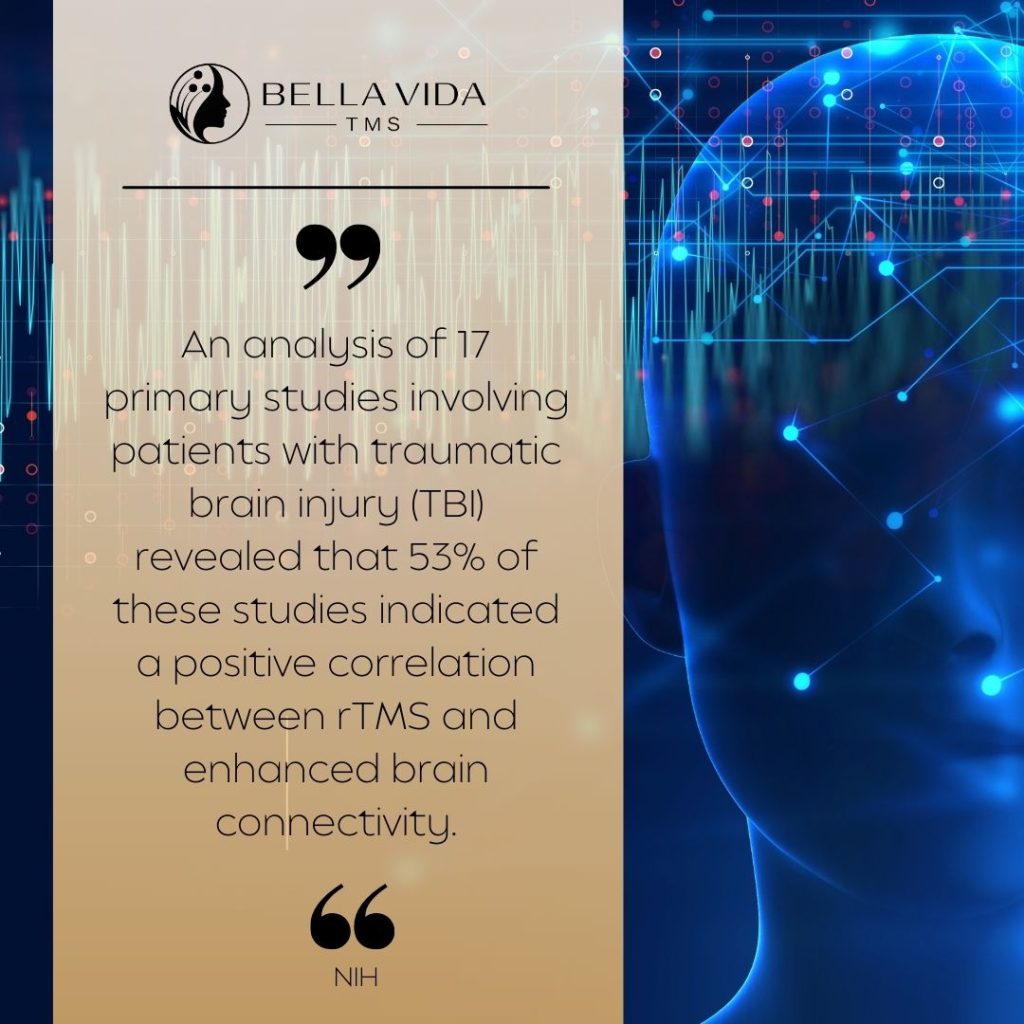Transcranial Magnetic Stimulation (TMS) is not only a treatment for various psychiatric disorders but also a powerful tool for enhancing neuroplasticity – the brain’s ability to reorganize itself by forming new neural connections. This section explores the relationship between TMS and neuroplasticity in depth.
Understanding Neuroplasticity
Neuroplasticity, also referred to as neural plasticity or brain plasticity, denotes a dynamic process involving adaptive structural and functional alterations within the brain. It encompasses the nervous system’s capacity to modify its activity in response to internal or external stimuli by rearranging its structure, functions, or connections, particularly following injuries such as stroke or traumatic brain injury (TBI). These modifications may result in beneficial outcomes, such as the restoration of function post-injury, or they may exhibit neutrality or negative implications leading to pathological consequences.
Neuroplasticity can be categorized into two primary mechanisms:
1. Neuronal regeneration/collateral sprouting: This encompasses phenomena like synaptic plasticity and neurogenesis.
2. Functional reorganization: This includes concepts such as equipotentiality, vicariation, and diaschisis.
In other words, neuroplasticity denotes the brain’s inherent ability to adapt and reorganize itself over the course of a lifetime in reaction to learning and experiences. Meanwhile, neurogenesis represents the ongoing capacity to generate fresh neurons and establish connections between existing neurons throughout one’s lifespan.
In the context of Transcranial Magnetic Stimulation (TMS), neuroplasticity is often gauged by assessing the alteration in cortical excitability before and after the administration of a series of repetitive TMS sessions. This assessment typically involves measuring the amplitude of motor evoked potentials (MEPs) recorded peripherally. To demonstrate neuroplasticity in brain regions that may not evoke a discernible behavioral response, techniques such as TMS-evoked potentials (TEPs) and neuroimaging methods are utilized. Consequently, the evaluation of TMS-induced neuroplasticity is categorized based on the methodologies employed to detect these adaptive changes in the brain.
The enduring effects of TMS have been likened to mechanisms of neuroplasticity and are considered biologically akin to processes like long-term potentiation and depression (LTP/LTD).
TMS and Brain Connectivity
TMS can induce long-lasting changes in neuronal activity, potentially leading to improved brain function. A study funded by the National Institute of Mental Health (NIMH), part of the NIH, demonstrated that TMS can significantly alter brain activity in ways that promote more adaptive, flexible neural networks.
TMS in Cognitive and Emotional Regulation
Research indicates that TMS can enhance cognitive and emotional regulation by targeting specific brain regions. For instance, stimulating the prefrontal cortex has been shown to improve executive functions and emotional control, as reported in a study available through the National Institutes of Health (NIH) database. Transcranial magnetic stimulation to the DLPFC node of the cognitive control network may have antidepressant efficacy via direct effects on cognitive control processes involved in emotion regulation.
TMS Cognitive Enhancement and Recovery from Brain Injury

TMS has the potential to facilitate learning and memory. NIH-supported research has shown that TMS, when applied to the hippocampal regions, can improve memory recall, suggesting its utility in cognitive enhancement and rehabilitation.
An NIH paper reviews 41 peer-reviewed articles/research about TMS and cognitive enhancement. The studies analyzed not only validate TMS treatment’s impact on cognitive enhancement but also indicate that the effectiveness of TMS may vary depending on the stimulation method employed.
The role of TMS in aiding recovery from brain injury is a promising area of research. The NIH has funded studies showing that TMS can accelerate recovery by promoting neuroplastic changes in the brain, aiding in the re-establishment of disrupted neural connections. An analysis of 17 primary studies involving patients with traumatic brain injury (TBI) revealed that 53% of these studies indicated a positive correlation between rTMS and enhanced brain connectivity.
The Future of TMS and Neuroplasticity
Continuing research, much of which is supported by the NIH, is exploring how TMS can be optimized to harness the brain’s neuroplastic potential. This research holds the promise of developing more effective treatments for a range of neurological and psychiatric disorders.
The intersection of TMS and neuroplasticity represents a frontier in understanding and treating brain-based disorders. By harnessing the brain’s innate ability to reorganize and adapt, TMS offers a powerful approach to improving mental health and cognitive function.
External Reference links
- National Library of Medicine ( NIH) – Neuroplasticity
- National Library of Medicine ( NIH) – Evidence of Neuroplastic Changes after Transcranial Magnetic, Electric, and Deep Brain Stimulation
- National Library of Medicine ( NIH) – Cognitive Enhancement in Neurological and Psychiatric Disorders Using Transcranial Magnetic Stimulation (TMS): A Review of Modalities, Potential Mechanisms and Future Implications
- National Library of Medicine ( NIH) – The Effect of Repetitive Transcranial Magnetic Stimulation (rTMS) on Cognition in Patients With Traumatic Brain Injury: A Protocol for a Randomized Controlled Trial


